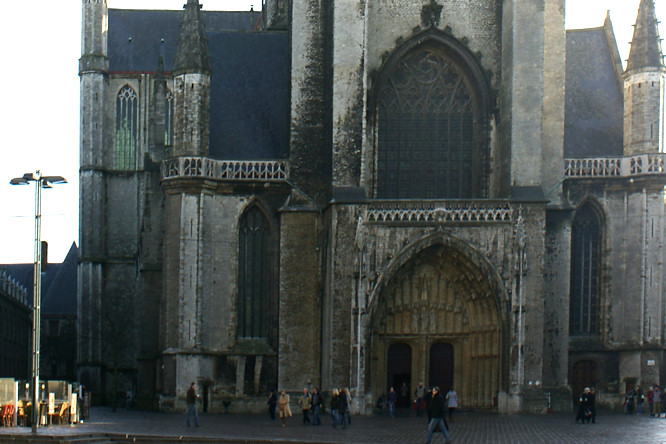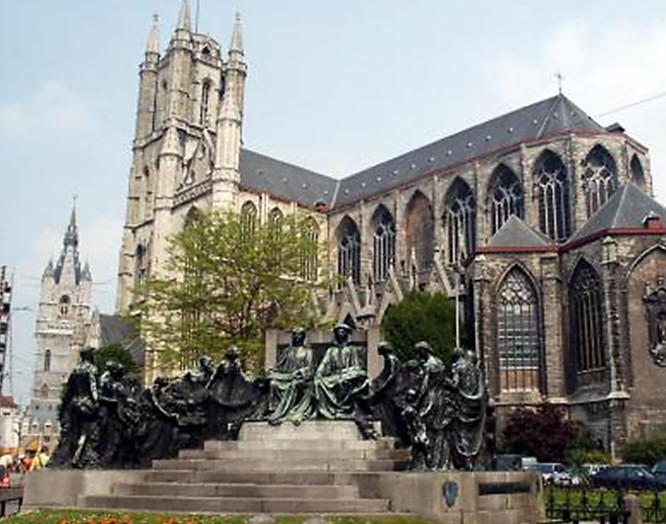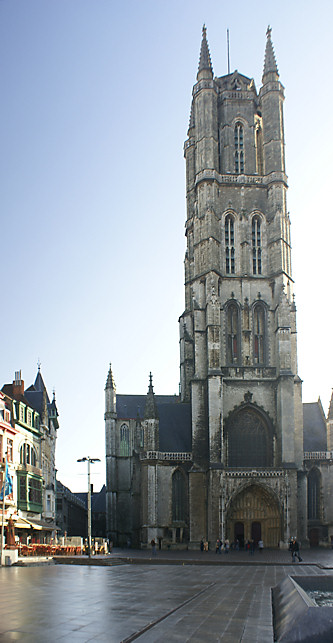Ghent St Bavo's Cathedral
Ghent St Bavo's Cathedral is also known as the Sint Baafskathedraal and the Gent Cathedrale Saint-Bavon. St Bavo's Cathedral belfry is one of the three famous towers of Ghent.

St Michael's Bridge is the best place to take a photograph of all three towers. I am not that interested in churches but this Cathedral was worth a visit. The Crypt is magnificent. It is full of ancient church art work and gold objects.
What blew me away was being able to see the original naive medieval paintings on the crypt ceiling. It is so rare to find them still in place. It was a real treat to be able to view paintings that were nearly 900 years old.
Admission to the cathedral is free. It opens at 0830am. Try to avoid the Sunday Morning church services. It costs about 4euros to see the large colourful medieval religious painting called the 'Adoration of the Mystic Lamb'. The Belfry opens at 10am and costs an additional about 4Euros.

The Cathedral Sint Baaf (Saint Bavo) was named after Saint Bavo, a 7th century local nobleman who became a saint after he had given away his possessions to the poor and entered the monastery. St Bavo's Cathedral is the oldest church in Ghent and the earliest records date it as far back as the 10th century.
In 942, a chapel was built inside the new portus near the busy mooring place on the Lower Scheldt. The church was dedicated to St. John the Baptist and was rebuilt and enlarged in the 11th century. Nothing remains of this chapel. About the middle of the 12th century, a cross-shaped Romanesque church with a crypt was built in the same place.
The Romanesque church was gradually dismantled and replaced by a Gothic church which was built in three major phases. The chancel was renewed at the beginning of the 14th century. This work manifests clear evidence of influence from the north of France and the Scheldt Gothic. The chancel area and the radiating chapel date from the beginning of the 15th century.

During the second phase between 1462 and 1538, the imposing west tower was erected in Brabant-Gothic style. In 1533, work started on phase three, the building of the nave. After the canons of the disbanded St. Bavo's Abbey were added to the St. John's Church, it became a collegiate church, a place of study and worship. When the diocese of Ghent was established in 1561, the collegiate St. Bavo's Church was elevated to a cathedral.
The church has suffered various setbacks. It was not spared the iconoclasts in 1566 or 1578 who destroyed objects of religious significance. A stroke of lightning ravaged the service towers and the side towers in 1602, and in 1640 the roof was completely burnt out. The cathedral underwent major renewals and restorations in the centuries which followed. The cathedral is very impressive with its tripodal space for chancel, transept, choir aisle, and circular chapels. The chancel with a gallery and sizeable windows is built in French High Gothic style. The nave has smaller windows and larger wall surfaces display the features of late Brabant Gothic.
The cathedral has a wealth of art treasures, including the monumental rococo pulpit by Laurent Delvaux (1745), the tombs of some Ghent bishops in the chancel, the Conversion of St. Bavo by Pieter Paul Rubens, and the world famous multi-section The Mystic Lamb. This altarpiece was painted by Hubert and Jan Van Eyck, by order of Judocus Vijdt, senior councillor of the City of Ghent. It was intended for the patron's own chapel and his wife Isabella Borluut and was completed in 1432. The Mystic Lamb has been transported abroad on several occasions, but, after the theft of two panels in 1934, it was transferred to the Christening Chapel for security reasons.
Travel books

